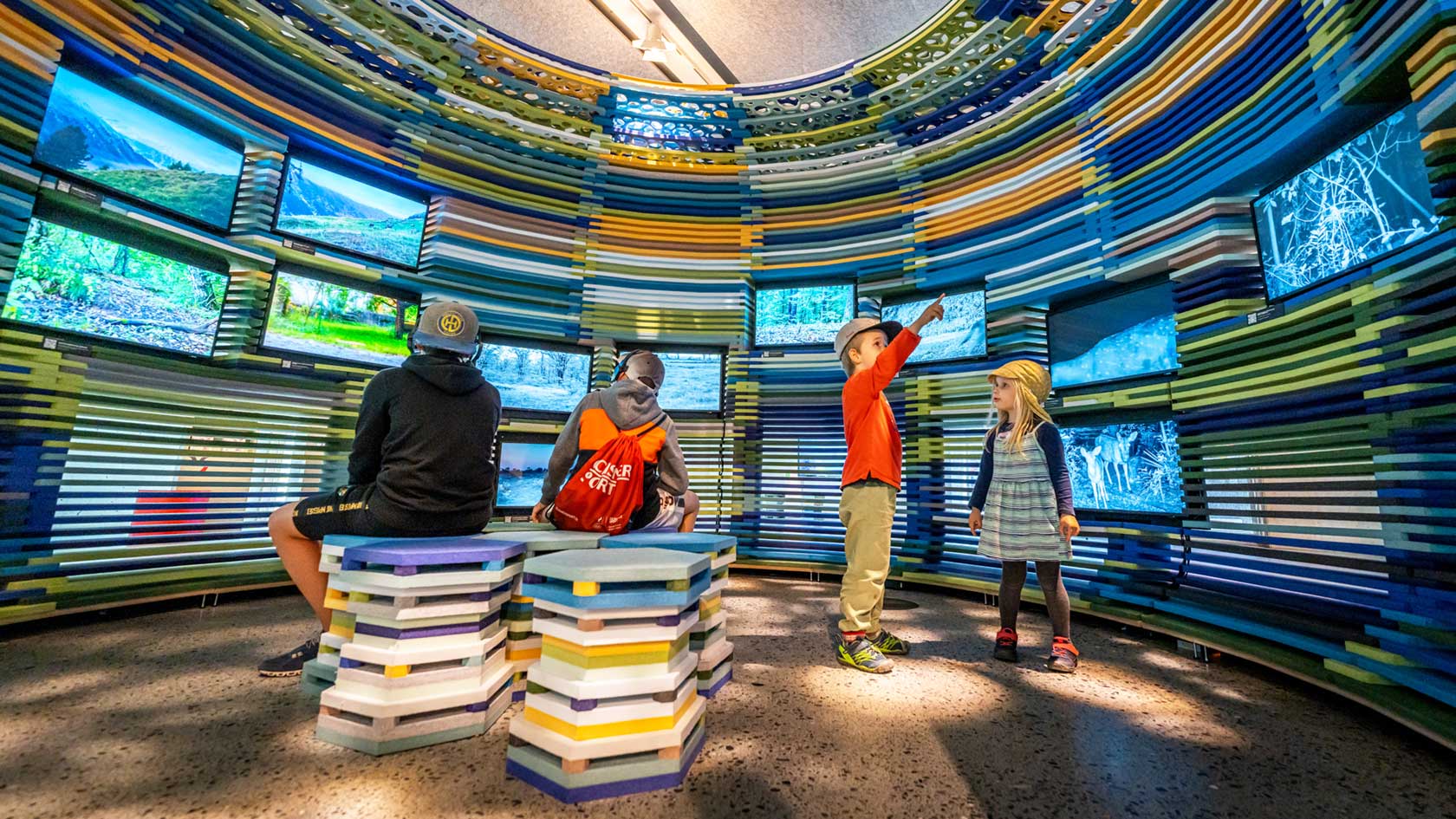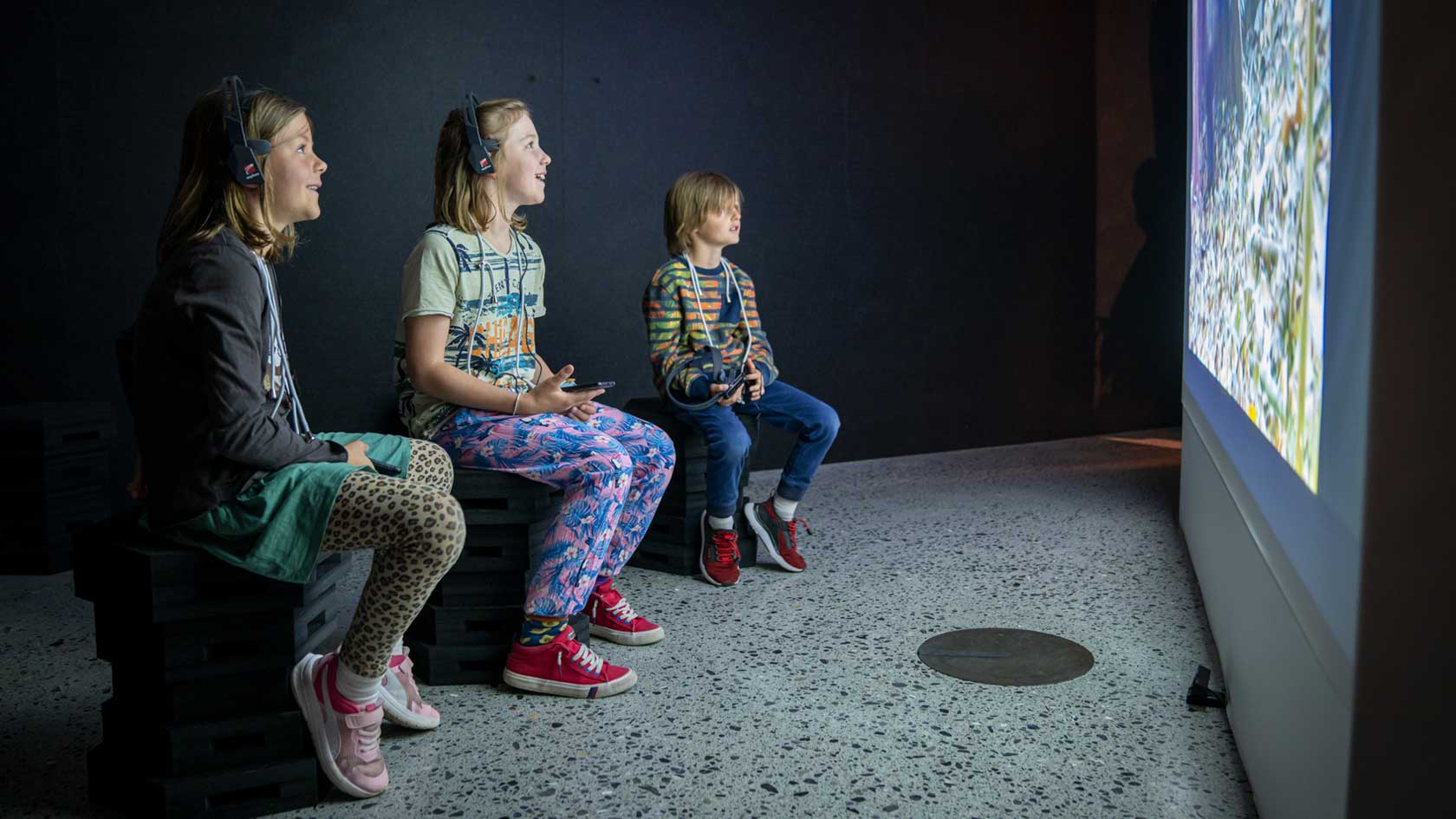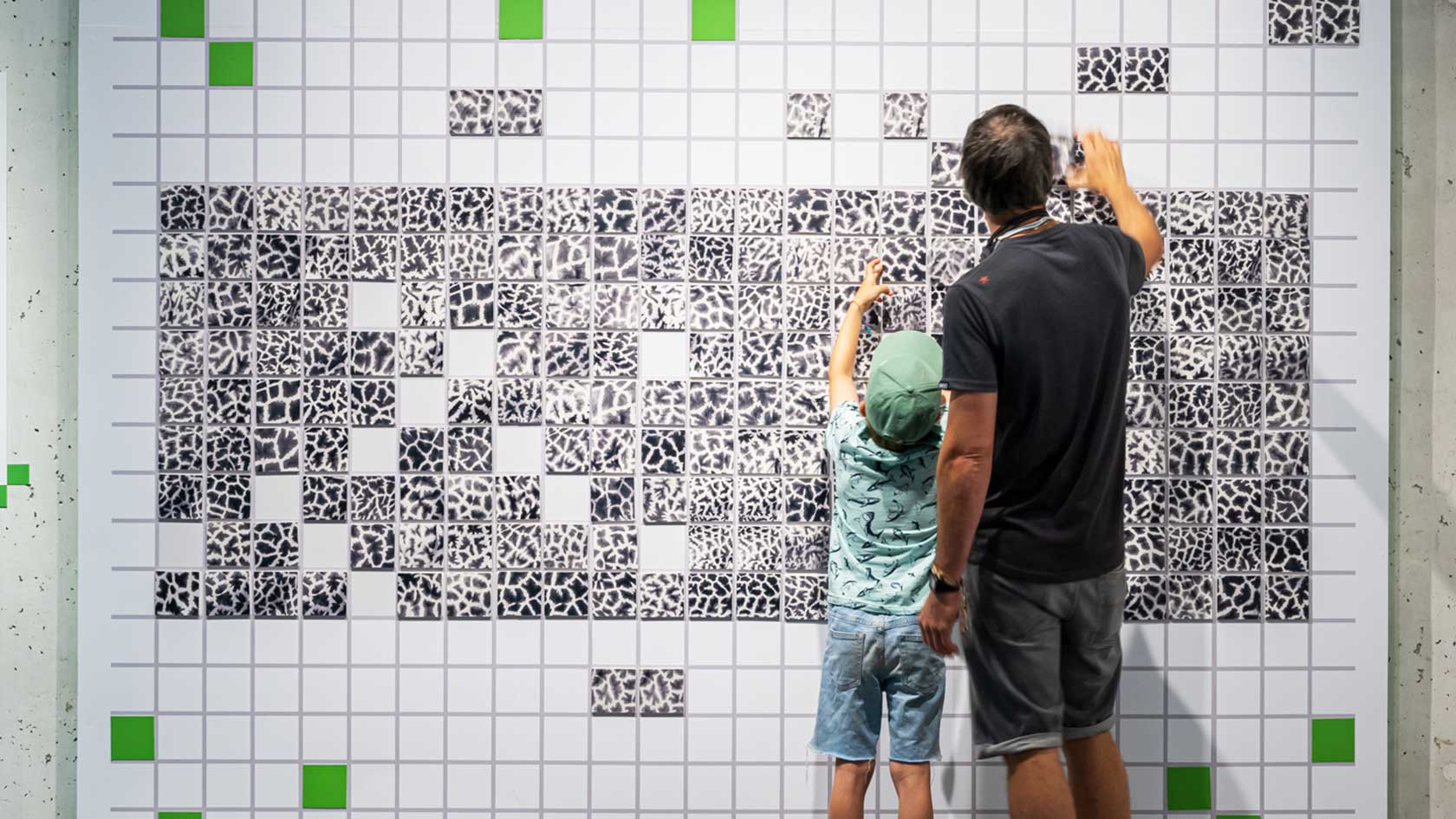Using AI Against Biodiversity Loss

One million species are currently under threat of extinction. This loss of biodiversity is a huge global challenge. Ecologists study how animal and plant worlds react to anthropic and climatic influences – and how we humans can protect them. To do this, they are increasingly turning to digital tools.
With Bits, Bytes & Biodiversity, the first special exhibition in the newly arranged National Park Centre in Zernez, the University of Zurich addresses the use of modern technologies in ecology. The exhibition, which was created in collaboration with over 40 researchers from the University of Zurich and institutions around the world, immerses its visitors in various current UZH research projects.
A transdisciplinary collaboration

The music installation Zuzuhören gerufen [called to listen] is the outcome of a collaboration between sound artist Nicolas Buzzi (composition/production) and Kathelijne Koops, professor at the Department of Evolutionary Anthropology at the University of Zurich.
For two decades, Kathelijne Koops has been researching the behavior of wild chimpanzees in the Nimba Mountains in Guinea. Her field team uses a range of innovative methods, including camera traps, to study how and why apes develop their cultural skills. Nicolas Buzzi has artistically interpreted this camera trap data, creating a composition that juxtaposes Western musical thinking with non-human cultures.
As a work at the interface between art, science and technology, Zuzuhören gerufen has several intertwined effects. For one, it reveals the data on the basis of which conservation projects are devised, creating an emotional link to scientific nature and species conservation.
For Kathelijne Koops, communication with the public is a key element of effective conservation measures. In her work she therefore harnesses powerful images to tell stories and reach people. “Working with Nicolas brings a whole new dimension to this kind of creative storytelling,” she says, “and allows us to bridge the gap between science and art.”
Creative impulses for research
The transdisciplinary exchange behind the installation furthermore offers creative impulses for research. The concept of animal cultures is relatively new in species conservation. Accordingly, the extent to which it could or should be incorporated into practice is controversial.
Nicolas Buzzi’s artistic engagement with scientific material and discourses opens up fresh perspectives from which new critical ways of thinking can emerge. Zuzuhören gerufen is intended to broaden and critically question perspectives on human and non-human cultures. For if other apes also develop complex forms of cultural expression – what, then, makes us human?
Finally, the installation creates awareness of the disappearance of habitats in the Anthropocene. Due to palm oil and coffee plantations, through deforestation and the extraction of mineral resources, ever larger areas of the natural habitat of chimpanzees are being lost. They are also threatened in the Nimba Mountains.
The region, which was declared a UNESCO World Heritage Site in the early 1980s because of its high biodiversity, is now on the Red List of World Heritage in Danger. This is the most urgent message behind Zuzuhören gerufen: We must act now to protect Nimba’s chimpanzee communities and to preserve their cultural diversity in the wild.
Spotting giraffe patterns

In the module Spot the spots, hands-on activity is called for. The magnetic wall memory game challenges children and adults to compete with pattern recognition technology by finding as many giraffe fur pattern pairs as possible. Just like fingerprints, giraffe coat patterns are individually unique and unchanging throughout their lives.
Spot the spots was developed in collaboration with Monica Bond, a wildlife biologist at the UZH Department of Evolutionary Biology and Environmental Studies. Together with her team at the Wild Nature Institute, she monitors and researches nearly 4,000 Masai giraffes in Tanzania.
“We could never have such a huge sample size for our demographic research without the help of AI,” she explains, “Spot the spots conveys how difficult it is to spot even a handful of individual giraffes by eye. Now imagine trying to do the same with thousands of giraffes using tens of thousands of photos!”
Groundwork for conservation
Using AI, Monica Bond and her team record the births and deaths of their 4,000 study animals, observe how the giraffes interact with each other and monitor how they move through their habitats. Their research provides important information for developing conservation measures.
It was important to Monica Bond to communicate this as well: “Masai giraffes are endangered, and we need to act to save them from extinction. Visitors to the national park already have an interest in nature and wildlife – which makes them the perfect audience for the conservation message that giraffes need our help to survive in the wild.”
An international research network
The walk-in video installation Triggered by Motion, in which more than 40 researchers from the University of Zurich and institutions worldwide are involved, is also part of the exhibition. The video pavilion, created by designer Dino Rossi in an algorithm-based visual programming language, brings together camera-trap data from all continents. This way it takes its visitors on a trip around the world. Via QR codes inside the pavilion, they can learn about the various research projects.
Alice Brambilla, who researches ibex at the Department of Evolutionary Biology and Environmental Studies, sees a great aesthetic and communicative potential in the installation. As a traveling exhibition, Triggered by Motion reaches a broad international audience: parallel to the exhibition in Zernez, a transportable version of the pavilion is touring the world. It is currently on display at the Dongdaemun Design Gallery in Seoul. Starting in September, it will be exhibited for nine months at the Science Gallery Bengaluru in Bangalore.
A central area of research at UZH
Ecology is a central field of research at the University of Zurich, which is ranked 11th worldwide in this subject area (GRAS Global Ranking of Academic Subjects 2022). Bits, Bytes & Biodiversity aims to promote a dialogue between research and conservation projects and the interested public. After all, although the future of digital conservation looks promising, conservation projects only work if they enjoy support beyond expert circles.